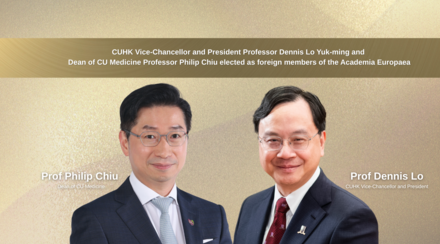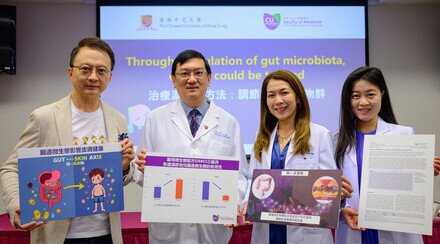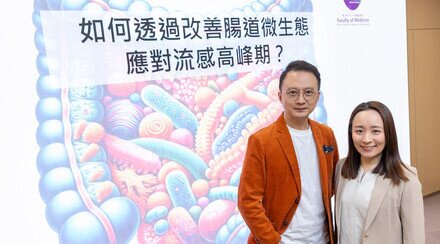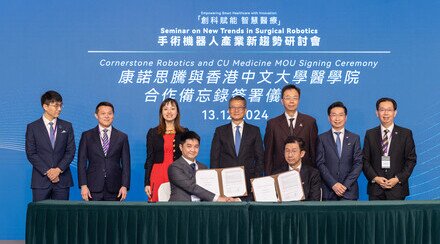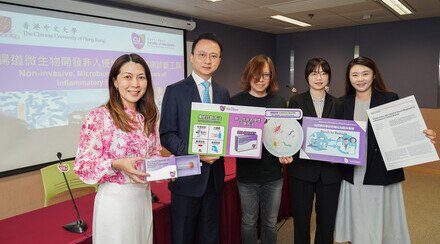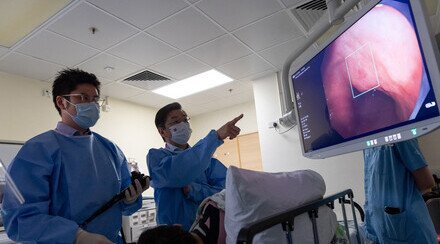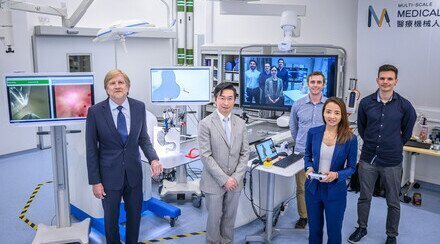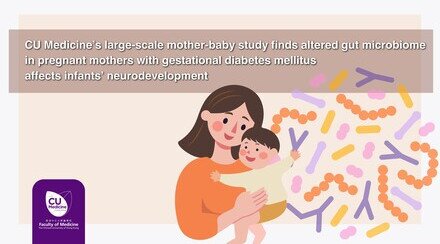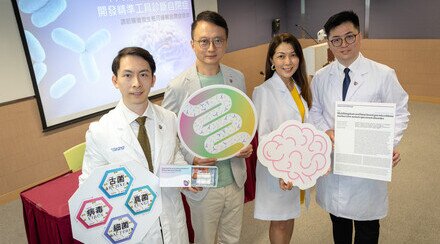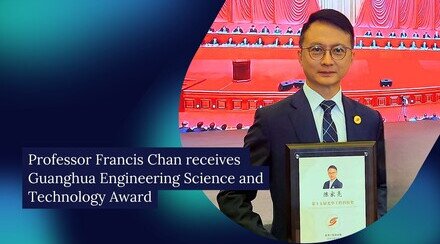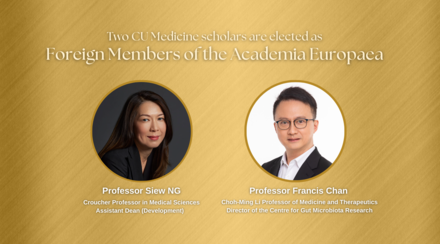CUHK Pioneers in Introducing Museum-Based Observational Skills into Medical Education
The Faculty of Medicine and the Art Museum of The Chinese University of Hong Kong (CUHK) announced today that they will jointly launch a museum-based programme to enhance the observational and articulation skills of medical students. Inspired by the “Enhancing Observation Skills” programme of the Yale University in the United States, the aim of CUHK’s programme is to draw on the University’s rich art collection to deepen experiential learning of the medical students, so to sharpen their sensitivity to visual details, textures and shapes of objects, as well as their articulation skill to make logical deductions. Results of a study conducted by the Yale University showed that 60% of students who participated in the museum-based programme improved significantly in analysing medical images, while only around 30% of students who did not receive that training showed improvement.
CUHK integrates art and science in medical education
Observation is the basic skill of a physician, and this can be enhanced through practice. The Faculty of Medicine of CUHK collaborates with the CUHK Art Museum, which has over 15,000 collections, to launch a pioneered museum-based programme. The programme highlights the difference between seeing and interpreting. Students need to visually inventory an artwork in as much details as possible and to use visual cues to draw conclusions and interpretations. This is analogous to a physician collecting signs and symptoms to draw conclusions about a patient’s diagnosis or formulate a list of differential diagnoses.
Professor Francis CHAN, Dean of the Faculty of Medicine at CUHK, highlighted that the programme integrates art and science in education. Professor CHAN stated, “Medicine is a science and also an art. To equip themselves to be good doctors, students should not only pursue medical knowledges but also explore different disciplines and aspects. I believe this programme will facilitate multi-disciplinary study in art and science, and broaden their horizons. This is a very good training for them to appreciate as well as to comprehend what they have seen, and thus acquire better understanding on ‘human beings’. Our ultimate objective is to help our students better care for their patients.”
Experience of Yale University shows art appreciation could enhance medical education
For two decades, Yale Center for British Art has pioneered a museum-based programme to sharpen observational skills of medical students, so to enhance their capability to detect and diagnose illnesses.
In a study published in the medical journal Clinical Orthopaedics and Related Research recently, 90 participants from the Yale University School of Medicine were randomly assigned to one of the three groups: a single 2.5 hour museum intervention, a lecture on reading X-rays or their regularly scheduled tutorial sessions on the subject of patient evaluation. A pre-test was administered to all students assessing their ability to describe the visual features necessary for diagnosis in a series of images of dermatologic conditions. A post-test was also demonstrated and results showed that over 60% of students in the museum intervention group achieved significantly better scores, while only around 30% of students showed improvement in the two control groups. Given the proven success and effectiveness of the programme, it is now a requirement for medical students at Yale University.
Professor Josh YIU, Director of the Art Museum at CUHK, said, “Experience of the Yale University shows art appreciation can enhance medical education. The Art Museum hopes that through the collaboration with the Faculty of Medicine and to draw on the University’s rich art collection, we could deepen the experiential learning of our medical students. Their sensitivity to visual details and textures will be sharpen, as well as their articulation and logical deduction skills.”
Programme highlights the difference between “seeing” and “interpreting”
The programme will begin in the academic year of 2018-2019, to be led by Professor Philip CHIU, Assistant Dean (Institutional Affairs) of the Faculty of Medicine at CUHK, and Professor Josh YIU. It will be a 3-hour session conducted in the Art Museum’s secured art-viewing room, and provide hands-on training for students to look at and handle artworks that are chosen specifically for this programme. The students will then be asked to describe what they see and feel, and to discuss alternative interpretations, thereby understanding both the possibilities and limitations of close observations.
Being a Lingnan painter under the tutelage of Professor CHAO Shaoang, Professor Philip CHIU expressed that the mastering of Chinese painting and surgical skills play the same tune, both require high concentration, good planning and hand-eye coordination. And Chinese painting helps him to better understand the need of patients.
Professor CHIU pointed out, “In clinical practice, physicians need to have keen and thorough observation of fact and texture. We also need to express clearly what we see and feel in the medical consultation. Sometimes we may need to look beyond the surface of our patients in search of additional support for meaning, comprehend and interpret. Therefore, we value the ability of medical students to ‘observe’, to ‘touch’, to ‘make logical deduction’ and to ‘articulate and communicate’. The aim of the pioneered programme jointly launched by the Faculty of Medicine and the Art Museum of CUHK is to let medical students to be keenly aware of the difference between ‘seeing’ and ‘interpreting’. They will then know how to observe and elicit significant information on patients’ symptoms in order to make correct diagnosis, thus providing the best care for patients.”

The Faculty of Medicine and the Art Museum of CUHK will jointly launch a museum-based programme to sharpen the medical students’ sensitivity to visual details, textures and shapes of objects, as well as their articulation skills. Professor Francis CHAN, Dean of the Faculty of Medicine at CUHK, highlights that the programme integrates art and science in education. It is a very good training for medical students to appreciate as well as to comprehend what they have seen, and the ultimate objective is to help them better care for their patients.

Being a Lingnan painter under the tutelage of Professor CHAO Shaoang, Professor Philip CHIU (left) expressed that the mastering of Chinese painting and surgical skills play the same tune, both require high concentration, good planning and hand-eye coordination. Chinese painting helps him better understand the need of patients.


Professor Josh YIU (right), Director of the Art Museum at CUHK, states that the new programme will provide hands-on training for students to look at and handle artworks that are specifically chosen. Medical students will be asked to describe what they see and feel, and to discuss alternative interpretations, thereby understanding both the possibilities and limitations of close observations. The artwork presented in the upper photo is the Fan Painting “Hunting” of Ju Lian, while the one presented in the lower photo is the ritual vessel dou.






